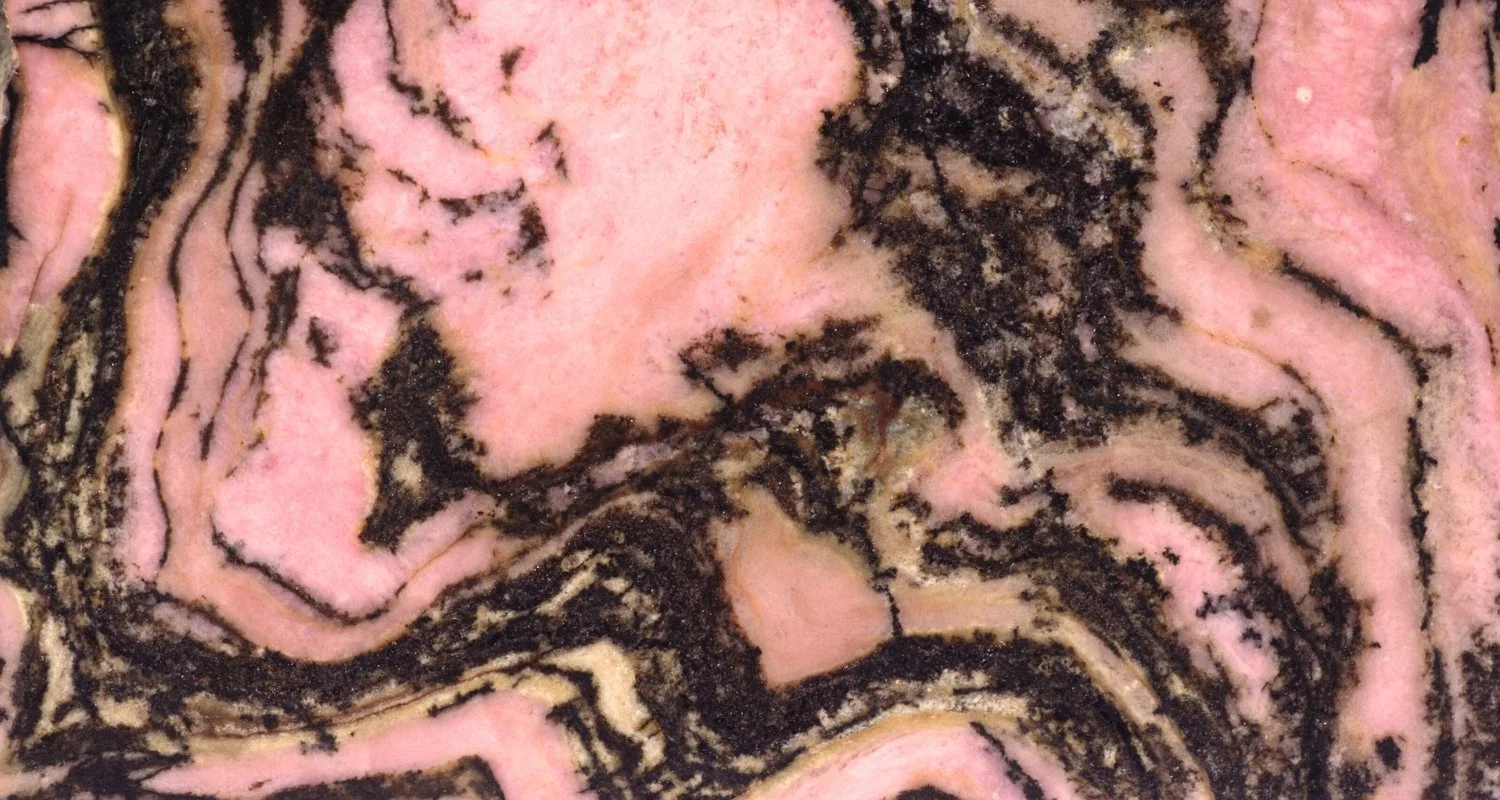Rhodonite
About
Rhodonite is a pink manganese silicate mineral often characterised by black or brown veins of manganese oxide. Its pink to rose-red colour, sometimes mixed with dark inclusions, makes it visually distinct. Major sources of rhodonite include Russia, Sweden, Australia, and the United States.
Birthstones & Anniversaries
Rhodonite is not a traditional birthstone but is often associated with the zodiac sign Taurus, symbolising compassion, forgiveness, and emotional resilience.
Crystal Healing Energy
The overarching theme of rhodonite is compassion and emotional resilience. Known for its heart-healing properties, rhodonite is thought to inspire love, compassion, and forgiveness. It is often used to help individuals release past emotional wounds, build self-confidence, and enhance understanding and connection in relationships. Rhodonite’s grounding energy is believed to promote emotional balance and reduce stress.
Facts
Characteristic Veining: Rhodonite is often distinguished by its black or brown manganese oxide veins, creating unique patterns within the stone.
Historical Use: Rhodonite has been used as a talisman in Russia, where it was believed to bring protection and confidence to travellers.
Russia’s Stone: Some of the finest rhodonite is found in Russia, where it is often used for carvings, decorative items, and jewellery.
Durable for Jewellery: With a hardness of 5.5 to 6.5, rhodonite is relatively durable for jewellery, though it should be protected from harsh impacts.
Colour Stability: Rhodonite’s colour is stable and does not fade when exposed to light, making it a long-lasting choice for both collectors and jewellery designers.
Science
Mineral: Rhodonite
Crystal System: Triclinic
Chemistry: (Mn,Fe,Mg,Ca)SiO₃
Colour: Pink to rose-red, with black or brown manganese oxide veins
Refractive Index: 1.711 to 1.751
Birefringence: 0.005 to 0.010
Specific Gravity: 3.4 to 3.7
Mohs Hardness: 5.5 to 6.5
TreatmentsRhodonite is typically untreated; however, lower-quality stones may sometimes be stabilised with resin to enhance durability.
SyntheticsSynthetic rhodonite is rare due to its relative abundance in nature
ImitationsPink glass and resin, as well as dyed stones, are sometimes used to mimic rhodonite. These imitations lack the natural black veining and specific crystal structure of authentic rhodonite.
similar materialsRhodocrosite: Often mistaken for rhodonite due to its pink colour, but it has a different crystal structure and typically shows banding rather than veining.
Thulite: A pink variety of zoisite that can resemble rhodonite but lacks the black manganese oxide veins.
Pink Opal: Another pink stone that may resemble rhodonite but is softer and lacks the black inclusions.

